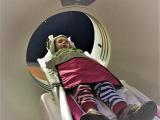The Centers for Disease Control and Prevention (CDC) reported 18 more cases of the mysterious acute flaccid myelitis (AFM) in the week ending on Nov 30, bringing this year's total to 134 cases confirmed in 33 states, among 299 cases reported, and the agency says the outbreak "appears to have peaked."
AFM, which can cause limb weakness and paralysis, usually affects children who develop symptoms 1 to 2 weeks following a non-specific viral infection. Though AFM has sometimes been associated with enteroviruses, little is known about the cause of the polio-like condition.
Pattern similar to previous years
Since 2014, officials have detected higher levels of AFM every 2 years in the fall throughout the United States. This year, Texas has reported the most cases, with 16, followed by Colorado (15), Ohio (10), and 9 each in Illinois, New Jersey, and Washington.
According to a CDC news release, "Most cases are reported between August and October, and a marked reduction in cases is seen in November. That pattern appears to be repeating in 2018 because states have reported fewer PUIs [persons under investigation] over the past couple of weeks. CDC expects this decline to continue."
This year's case totals are nearing 2016's, which saw 149 confirmed cases of AFM in 39 states. In 2014, the first ear CDC began tracking case counts, officials confirmed 120 cases. 2015 and 2017 saw lower case totals.
According to a practice article today in the Canadian Medical Association Journal (CMAJ), most patients have ongoing deficits 4 to 6 months post-diagnosis, with full recovery at that point in only 8% to 18% of cases. The article also notes that 8% to 14% of patients require either assistive devices for ambulation or complete dependence on caregivers.
There is no known treatment for AFM at this time.
Diagnosing a mysterious disease
According to the CDC, AFM is diagnosed when a patient has an acute onset of focal limb weakness and magnetic resonance imaging shows lesions in the spinal cord's gray matter in more than one spinal segment.
In a new retrospective case series published in JAMA Pediatrics, three neurologists examine the diagnostic framework for AFM by evaluating the medical charts and images of 45 AFM patients diagnosed in Canada and the United States since 2012 to establish if any possible alternative diagnoses existed for the patients' illness.
Eleven patients were given the designation of "AFM-ad" (AFM with possible alternative diagnoses) including 3 cases involving transverse myelitis and 3 patients with spinal cord ischemia. The authors said this finding suggests that 1 out of 4 patients diagnosed as having AFM could be suffering from a different illness.
Of the patients with restrictively defined AFM (rAFM; no other possible condition), all reported asymmetric onset of symptoms. Bilateral onset was more common in the AFM-ad group. All patients with rAFM had non-specific viral symptoms prior to illness onset, compared with 63.6% of AFM-ad patients.
Various pathogens were found in the rAFM group, but there was no overwhelming evidence that any single pathogen caused AFM.
"In the rAFM group, specific pathogens were identified in 13 patients (38.2%) systemically (serum, nasal, sputum, or stool) including 5 with enterovirus D68, 2 with unspecified enterovirus, 2 with rhinovirus, 2 with adenovirus (all of the aforementioned by polymerase chain reaction [PCR]), and 2 with mycoplasma (by acute and convalescent titers)," the authors wrote.
In a commentary also published in JAMA Pediatrics, Sara E. Hopkins, MD, MSPH of the Children's Hospital of Philadelphia wrote, "A high index of suspicion is essential to diagnosing AFM," and said multicenter studies must be established to learn more about the disease.
See also:
Dec 3 CDC update
Dec 3 CDC news release
Dec 3 CMAJ article
Nov 30 JAMA Pediatr study
Nov 30 JAMA Pediatr viewpoint




















